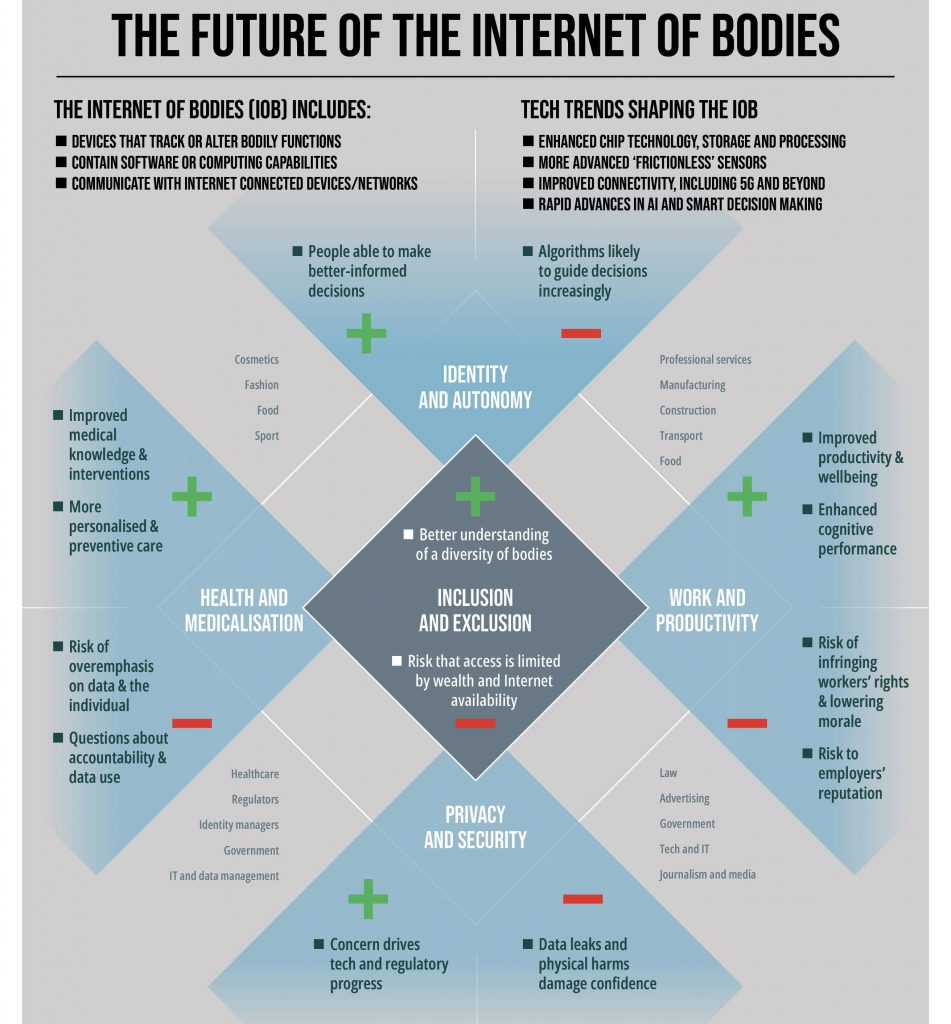The internet of bodies can be thought of as one step beyond the internet of things. It is a world where our bodies are monitored, through wearable devices such as watches or wristbands, or even implants. It can be benign, and work in our service, or be a technology of control.
An example of the first: we are training for an event and wear a heart rate monitor linked to a specialist device to measure performance. An example of the second: the devices used in Amazon warehouses to track the performance and the whereabouts of their staff.
SOIF was fortunate earlier this year to work on a project exploring the internet of bodies with NTT Data, Japan’s biggest telecommunications company. Clients in sectors such as insurance wanted to understand the impact of the technology. Quite a lot has been published on the technologies involved, but much less on the social and business impact.

The technologies that are driving the internet of bodies are familiar: sensor technology, AI, connectivity, and materials science. To understand the wider socio-economic effects, we first developed a scan that identified emerging themes that were relevant to the internet of bodies. We then used a range of methods that helped to situate these technologies in their social context. These included Marshall McLuhan’s Technology Tetrads, Bill Sharpe’s Techology Axis Model, and IFTF’s Systems Mythologies. Each of these produced different insights, so we were able to triangulate different patterns of emerging change.
Emerging themes
The emerging themes included—perhaps obviously—privacy and security, and health and wellbeing, but also work and productivity and identity and autononomy. In the area of health and wellbeing, for example, it might be reassuring to have your vital signs tracked remotely, and also assuring to family members. But, with its focus on medical models of health, it also means that the whole world becomes a hospital.
There are also clear business issues, and some of these are complicated to deal with. Businesses—especially insurance businesses—imagine that having more information about their customers will improve customer outcomes. But there is a real risk of drowning in a firehose of data, in which the noise kills any signal. With more data it also becomes harder to understand how automated or even semi-automated systems reach their decisions, which could lead to discrimination suits and greater regulatory intervention.
For these reasons it seems likely that the biggest impact of the internet of bodies will be in the realm of privacy architecture. Rather than the current ‘retail’ model of data gathering we will see new intermediaries whose job it is to protect end users from having their data abused by third parties. We only scratched the surface of this in the project, but it raises interesting ways to improve social trust around data.
